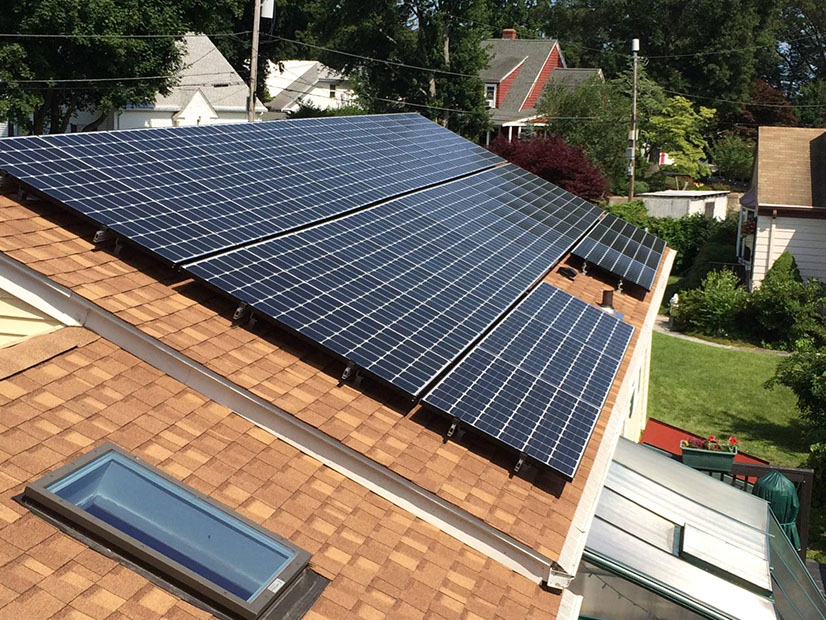
Rhode Island’s climate council has begun the process of sorting out how it will define “net zero by 2050” for the upcoming update to the state’s 2016 Greenhouse Gas Emissions Reduction plan.
In a public session on Tuesday, the Rhode Island Executive Climate Change Coordinating Council (EC4) sought comments on which emissions to count in the plan, how to net those emissions and over what time frame to net them.
Under Rhode Island’s Act on Climate passed last year, the EC4 must submit a GHG emissions reduction plan update by January . The act sets an economy-wide, net-zero emission target for 2050.
In the current GHG inventory, the state tracks carbon dioxide, methane, nitrous oxide and fluorinated gases, summarized as CO2 equivalent and reported in million metric tons (MMT). While attendees were supportive of the four-GHG approach, there was some concern about the time frames used to calculate equivalencies.
“To combine the impacts of these very different kinds of gases, you need to come up with a way to figure out what one unit of methane means in terms of warming for the planet compared to carbon dioxide,” Timmons Roberts, Ittleson professor of environmental studies and sociology at Brown University, said during the session. That calculation, he added, depends on the time frame used.
Carbon dioxide, for example, stays in the atmosphere for hundreds of years, while methane has a short-term impact before breaking down. Their potential for warming the plant is calculated differently, depending on the time frame.
The New York Climate Action Council, in its draft scoping plan released in December, switched from a 100-year impact time frame to 20 years. For methane, Roberts said, that switch adjusts the impact from being “20 times worse than carbon dioxide per molecule to about 84 times worse.”
He suggested that Rhode Island consider the 20-year time frame for its accounting. “It looks like that’s the way the science is going,” he said.
The EC4 is considering different methods for the way it balances GHG emission from sources with sinks to find net emissions. Under the current inventory, Rhode Island takes all GHG sources and all GHG sinks, both summarized as MMTCO2e, and nets them, according to Carrie Gill, chief economic and policy analyst at the Rhode Island Office of Energy Resources.
As an alternative, she said, the accounting could net each GHG source and sink individually, then convert each GHG to MMTCO2e and add them together to find the final net measurement. A benefit of netting the GHGs separately, according to Gill, would be to target specific policies.
“If one of our policy objectives happens to be eliminating all [methane] leakage from the natural gas distribution system, then that would point us towards trying to get to a place where we can net each GHG first, because then it would meet additional policy objectives,” she said.
While attendees did not favor one accounting method over another, some suggested that netting through offsets or sinks should be a last resort, and Rhode Island should count emission sources outside of the state.
Rhode Island “should get to zero-carbon equivalent emissions” as quickly as possible, attendee Peter Trafton said. “Let’s start by 2030 and not be so focused on the arithmetic of how we add up to 2050 that we forget to get down as low as we can now.”
And while the state’s GHG inventory is consumption-based only for electricity, Roberts suggested it should be used for “everything.” That approach, however, has drawbacks.
“If we have natural gas-fired power plants, we should be including the emissions from the extraction and the transportation of that natural gas … because we know that Pennsylvania, New York and Connecticut, the states through which it’s traveling, are not counting those emissions,” Roberts said.
There’s no good way, however, to be certain of what other states are including in their own GHG inventory, he said.
The EC4 also is considering options for electricity sector accounting that changes the time frame for when emissions are released into the atmosphere.
“Our current practice aggregates these emissions based on averages over the entire year,” Gill said. Electric sector emissions change based on the fuel mix at the time that the electricity is pulled from the grid. Rhode Island, Gill said, counts them equally, whether it’s a renewables-heavy mix on a warm day or a fossil fuel-heavy mix on a cold day.
Future accounting options may allow the state to consider netting emissions over smaller time frames, but Gill said that would require some technological advances in accounting systems.
The EC4 will accept comments on how to define net zero by 2050 in the updated emissions-reduction plan through Jan. 28. In February, the council will discuss a draft of that definition during its regular meeting and release an update based on public input in March.
Another public comment session for the emissions-reduction plan in March will address the 1990 baseline against which emissions are measured.


